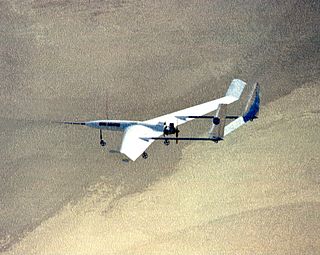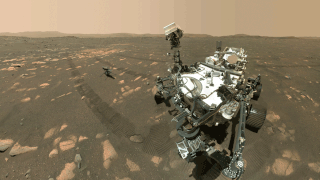Related Research Articles

A heliport, sometimes termed a vertiport, is a small airport suitable for use by helicopters and various types of vertical lift aircraft. Designated heliports typically contain one or more touchdown and liftoff areas and may also have limited facilities such as fuel or hangars. In some larger towns and cities, customs facilities may also be available.

The ICAOairport code or location indicator is a four-letter code designating aerodromes around the world. These codes, as defined by the International Civil Aviation Organization and published quarterly in ICAO Document 7910: Location Indicators, are used by air traffic control and airline operations such as flight planning. ICAO codes are also used to identify other aviation facilities such as weather stations, international flight service stations or area control centers, whether or not they are located at airports. Flight information regions are also identified by a unique ICAO-code.
A location identifier is a symbolic representation for the name and the location of an airport, navigation aid, or weather station, and is used for staffed air traffic control facilities in air traffic control, telecommunications, computer programming, weather reports, and related services.

Jezero is a crater on Mars in the Syrtis Major quadrangle, about 45.0 km (28.0 mi) in diameter. Thought to have once been flooded with water, the crater contains a fan-delta deposit rich in clays. The lake in the crater was present when valley networks were forming on Mars. Besides having a delta, the crater shows point bars and inverted channels. From a study of the delta and channels, it was concluded that the lake inside the crater probably formed during a period in which there was continual surface runoff.

A Mars aircraft is a vehicle capable of sustaining powered flight in the atmosphere of Mars. So far, the Mars helicopter Ingenuity is the only aircraft ever to fly on Mars, completing 72 successful flights covering 17.242 km (10.714 mi) in 2 hours, 8 minutes and 48 seconds of flight time. Ingenuity operated on Mars for 1042 sols, until its rotor blades, possibly all four, were damaged, causing NASA to retire the craft.

Mars 2020 is a NASA mission that includes the rover Perseverance, the now-retired small robotic helicopter Ingenuity, and associated delivery systems, as part of the Mars Exploration Program. Mars 2020 was launched on an Atlas V rocket at 11:50:01 UTC on July 30, 2020, and landed in the Martian crater Jezero on February 18, 2021, with confirmation received at 20:55 UTC. On March 5, 2021, NASA named the landing site Octavia E. Butler Landing. As of 19 July 2024, Perseverance has been on Mars for 1213 sols. Ingenuity operated on Mars for 1042 sols before sustaining serious damage to its rotor blades, possibly all four, causing NASA to retire the craft on January 25, 2024.

Ingenuity, nicknamed Ginny, is an autonomous NASA helicopter that operated on Mars from 2021 to 2024 as part of the Mars 2020 mission. Ingenuity made its first flight on April 19, 2021, demonstrating that flight is possible in the extremely thin atmosphere of Mars, and becoming the first aircraft to conduct a powered and controlled extra-terrestrial flight. It was designed by NASA's Jet Propulsion Laboratory (JPL) in collaboration with AeroVironment, NASA's Ames Research Center and Langley Research Center with some components supplied by Lockheed Martin Space, Qualcomm, and SolAero.

MiMi Aung is a Burmese-American engineer. Currently, she is director of technical program management for Amazon's Project Kuiper, an initiative to increase broadband internet access through an array of satellites in low Earth orbit.

Perseverance, nicknamed Percy, is a car-sized Mars rover designed to explore the Jezero crater on Mars as part of NASA's Mars 2020 mission. It was manufactured by the Jet Propulsion Laboratory and launched on July 30, 2020, at 11:50 UTC. Confirmation that the rover successfully landed on Mars was received on February 18, 2021, at 20:55 UTC. As of 16 July 2024, Perseverance has been active on Mars for 1210 sols since its landing. Following the rover's arrival, NASA named the landing site Octavia E. Butler Landing.

The Mars 2020 mission, consisting of the rover Perseverance and helicopter Ingenuity, was launched on July 30, 2020, and landed in Jezero crater on Mars on February 18, 2021. As of July 16, 2024, Perseverance has been on the planet for 1210 sols. Ingenuity operated for 1042 sols until its rotor blades, possibly all four, were damaged during the landing of flight 72 on January 18, 2024, causing NASA to retire the craft.

Håvard Fjær Grip is a Norwegian cybernetics engineer and robotics technologist. He was the chief pilot of NASA's Jet Propulsion Laboratory's Mars helicopter, Ingenuity, and led the development of its aerodynamics and flight control system. Grip successfully flew Ingenuity's first flight on Mars on April 19, 2021, which made history as the first extraterrestrial helicopter flight. As of October 2023, he is chief engineer of the Mars Sample Recovery Helicopters, part of the NASA-ESA Mars Sample Return campaign.

J. "Bob" Balaram is an Indian-American scientist and engineer currently working for National Aeronautics and Space Administration. He is the chief engineer and designer of Ingenuity, the first extraterrestrial aircraft, that was attached underside of car-sized Perseverance rover that successfully landed on the Mars in February 2021.

Timothy Canham is an American software engineer. He works at the Jet Propulsion Laboratory (JPL), where he is the operations lead and former software lead for the Mars helicopter Ingenuity. He resides in Santa Clarita, California.

The Mars Sample Recovery Helicopters are a pair of robotic unmanned helicopters being developed by the engineers of the American company AeroVironment Inc. and proposed in March 2022 as a means of delivering Martian soil samples from the sample depots made by the Perseverance rover to the location of the Sample Retrieval Lander (SRL) that will load these samples onto the Mars Ascent Vehicle (MAV), which, in accordance with the NASA-ESA Mars Sample Return program, will deliver them to low Martian orbit for future return to Earth.
References
- ↑ "NASA's Ingenuity Mars Helicopter Succeeds in Historic First Flight". Mars Exploration Program. NASA. 2021-04-19. Retrieved 2021-04-19.